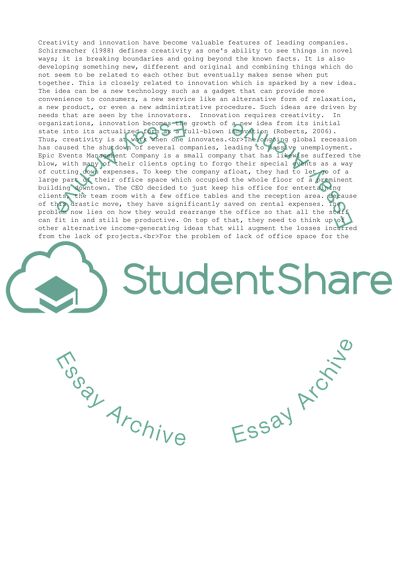Cite this document
(“Creativity report Coursework Example | Topics and Well Written Essays - 1250 words”, n.d.)
Creativity report Coursework Example | Topics and Well Written Essays - 1250 words. Retrieved from https://studentshare.org/business/1635830-creativity-report
Creativity report Coursework Example | Topics and Well Written Essays - 1250 words. Retrieved from https://studentshare.org/business/1635830-creativity-report
(Creativity Report Coursework Example | Topics and Well Written Essays - 1250 Words)
Creativity Report Coursework Example | Topics and Well Written Essays - 1250 Words. https://studentshare.org/business/1635830-creativity-report.
Creativity Report Coursework Example | Topics and Well Written Essays - 1250 Words. https://studentshare.org/business/1635830-creativity-report.
“Creativity Report Coursework Example | Topics and Well Written Essays - 1250 Words”, n.d. https://studentshare.org/business/1635830-creativity-report.


